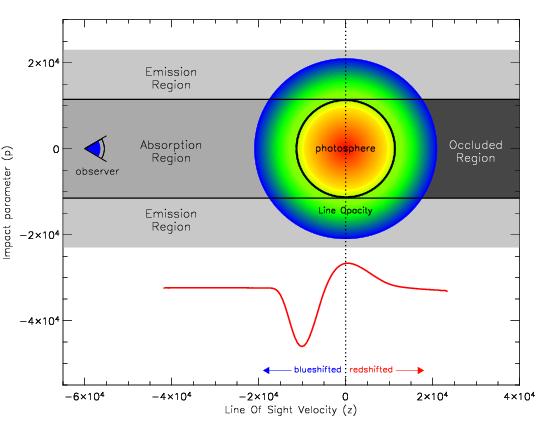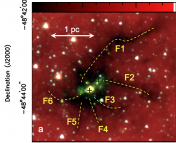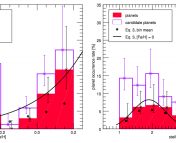- Title: Massive Stars: Key to Solving the Cosmic Puzzle
- Authors: Aida Wofford, Claus Leitherer, Nolan Walborn, Myron Smith, Maria Pena-Guerrero, Luciana Bianchi, Davis Thilker, John Hillier, Jesus Maiz Apellaniz, Miriam Garcia, Artemio Herrero
- First Author’s Institution: Space Telescope Science Institute
Ultra-Violet (UV) astronomy is a tricky business. Due to the (unfortunate for astronomy, very fortunate for life) opaqueness of our atmosphere at those wavelengths, it is a business which requires space-based missions. The current generation of UV-capable telescopes (Hubble, GALEX, Swift) are all mature telescopes which may be closer to end of their time than the beginning.
NASA’s Call For Information:
Hence, a little over three months ago, NASA put out a Request For Information to the astrophysics community. Specifically, they were seeking “information that can be used to develop a cohesive set of science goals that motivate and support the development of the next generation of UV/Visible space astrophysics missions”. The full text of the request can be found here. Although there is no guarantee, by responding to this request, astronomers can promote (1) what they think the big scientific goal for the next generation of telescopes should be and (2) what the specific technical requirements of the telescope (e.g. diameter of the mirror, wavelength range it can detect, etc.) would need to be in order to achieve those goals. Scientists’ responses to RFIs like this are usually referred to as white papers.
Massive Stars as Motivation:
The authors of today’s paper propose that studies of massive stars should be an integral part of the science goals of any new UV observatory, and argue strongly for a 10+ meter telescope which (1) has both imaging and spectral capabilities and (2) is sensitive from the far-UV to optical wavelengths. When you hear these numbers keep in mind: Hubble is only 2.4 meters! The large telescope would allow one to both resolve and take spectra of hundreds of individual stars in large number of nearby galaxies. The authors offer several reasons why this would be very useful in advancing our understanding of the universe. I describe just one of these reasons below, but if you are intrigued check out the full white paper for more information.
Winds, Winds and Mass-Loss Rates:
All stars lose mass (e.g. the solar wind), but massive stars can actually lose a significant fraction of their initial mass throughout their lives. As a result, these winds play a large role in the chemical enrichment of the interstellar medium, the dynamical evolution of the interstellar medium (with mass comes momentum and energy) and the ultimate fate of the star itself (by dictating the type of supernova it explodes as, what type of remnant will remain, etc.). Thus, achieving a more complete understanding of the mass-loss from massive stars will not only further our understanding in many areas of astrophysics beyond simply stellar evolution.
So what does this have to do with the UV? It turns out that the mass-loss from many hot massive stars is due to something called radiation driven winds. On a basic level these winds are caused by a combination of three effects: (1) a majority of the radiation from hot stars comes out in the UV, (2) Many ions present in the outer atmospheres of stars (C, N, Fe, etc.) have numerous atomic transitions in the UV (and hence can absorb UV light), and (3) the luminosity of massive stars is very high. Thus, a fraction of the energy initially contained in the star’s radiation can be transferred to the ions in its atmosphere, causing them to actually accelerate away from the star.
Given that these winds are caused by the UV atomic transitions, it is understandable that the physical parameters of the wind would leave a very significant mark on the UV spectra of a star (e.g., see Figure 2, below). Indeed, by modeling these spectra one can constrain both the mass-loss rate from the star and the terminal velocity of the wind. Doing this for hundreds of individual stars in various environments would allow scientists to begin to understand how other parameters, such as rapid rotation, magnetic fields, binary interactions, and metallicity affect the mass-loss from massive stars. Some studies of this sort have already been carried out, but the new proposed telescope would make this sort of study possible on a much larger scale.
And this is only the tip of the iceberg. The authors of this white paper also discuss how studies of massive stars can further our understand of topics such as (1) star formation, (2) extra-galactic extinction, and (3) the high redshift inter-galactic medium. I highly encourage you to check it out!






